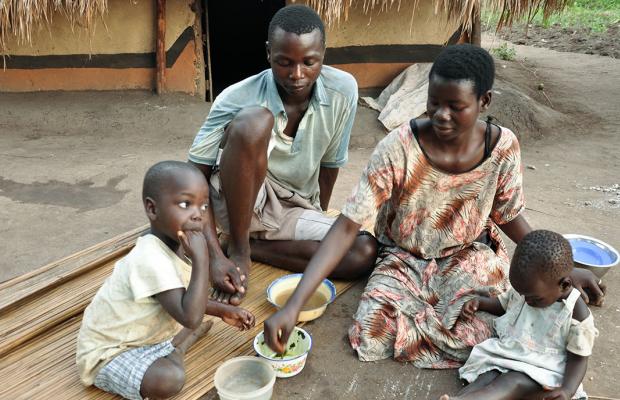
Kampala, Uganda | THE INDEPENDENT | Severe food disaster is expected to last up to January in North-Eastern regions of Karamoja and Teso. This is according to two early warning agencies.
The Integrated Food Security Phase Classification (IPC) and the USAID funded Famine Early Warning System Network (FEWSNET) says the food crisis will affect Kaabong, Nakapiripirit, Moroto, Kotido and Napak.
They say the districts of Kitgum, Agago, Abim, Katakwi and Amudat descended in food stress in July with situation expected to worsen in September. The crisis in Karamoja will be triggered by late and below-average harvests, with deficits expected to fall up to 30 to 50 percent due to early-season losses, reduced area planted, and Fall Army Worm incidence.
Samuel Mpimbaza Hashaka, the Abim Resident District Commissioner says although below average harvest is expected, many households are optimistic that they will navigate the difficult period with bumper harvests in Sorghum, Green Gram, groundnuts, Simsim and some Maize.
The agencies say the below-average harvest is expected to improve food security outcomes to stressed, but most households will deplete their food stocks early triggering the crisis by January.
Chris Charles Oyua, the Managing Director of Maco Consulting says a recent study they conducted for Uganda Farmers’ Common Voice Platform indicated that there is urgent need to operationalize the Food and Nutrition Council, undertake land reforms and food and Animal traceability.
Oyua says the National Food Security and Nutrition Action Plan 2011 – 2016 was developed to coordinate multi-sectoral strategies for achieving food security and nutrition in the country which were never factored in annual plans of the various ministries.
This he says crippled the implementation of the policy that a successor plan is waiting to be launched.
The Action plan was developed to improve five areas of food and nutrition namely utilization of maternal and infant related nutrition services, enhancing consumption of diverse diets and protecting households from shocks and vulnerabilities that affect nutritional status.
The others are creating awareness and strengthening the policy regimes of the country to implement, monitor and evaluate food security and nutrition projects in the country.
Oyua says if government had properly implemented the National Action plan, disasters such as is being predicted could have been mitigated.
According to the 2018 Household and Demographic Survey (HDS), 84 percent of Ugandans are food secure, 2.4 Million children are stunted, 11 percent underweight with 4.1 percent wasted.
Last year, Parliament approved the recruitment of district nutrition officers to combat malnutrition in the country.
Milly Mugenyi, the Woman Member of Parliament for Butaleja and a member of the Food and nutrition committee of Parliament says they received a report indicating that majority of the districts in Uganda have already recruited their nutrition officers.
She says storage challenge is at the centre of the main challenges affecting food security and nutrition in the country.
The Uganda Farmers Common Voice Platform says the country’s food and nutrition policy 2003 needs to be repealed for farmers to effectively avoid food stress and nutrition disasters such as this.
Indicators of food security include availability of adequate produced food, its supply to consumers, and storage for times of low productivity and associated nutritional values. The others include utilization of food diets and the stability of climate, economic and political situations.
Caleb Gumisiriza, the head of Policy Research and Advocacy at Uganda National Farmers Federation says government should work towards increasing access to food to consumers in Karamoja.
“Policies which govern food security and nutrition in Uganda include the Ministry of Agriculture, Animal Industry and Fisheries National Action Plan, Agriculture Sector Strategic Plan (ASSP) and the Food and Nutrition Policy 2003,” he says.
Collectively, the policies seek to limit dependency on imported foods by increasing food productions and increasing household incomes for those depend on procured food to access food whenever they need the food.
Gumisiriza says Uganda’s food value chain is complicated by existence of too many intermediaries whose activities drive up the final costs of food. He says the weak integration of local producers in the regional and world markets contributes to more damage to domestic food security.
*****
URN
 The Independent Uganda: You get the Truth we Pay the Price
The Independent Uganda: You get the Truth we Pay the Price




its high time the government got prepared to sustain its people with food due to locust invasion most especially in NORTHERN UGANDA
i’m found in MASHERUKA(S/COUNTY) ~ SHEEMA(DISTRICT) ~MABAARE (VILLAGE)